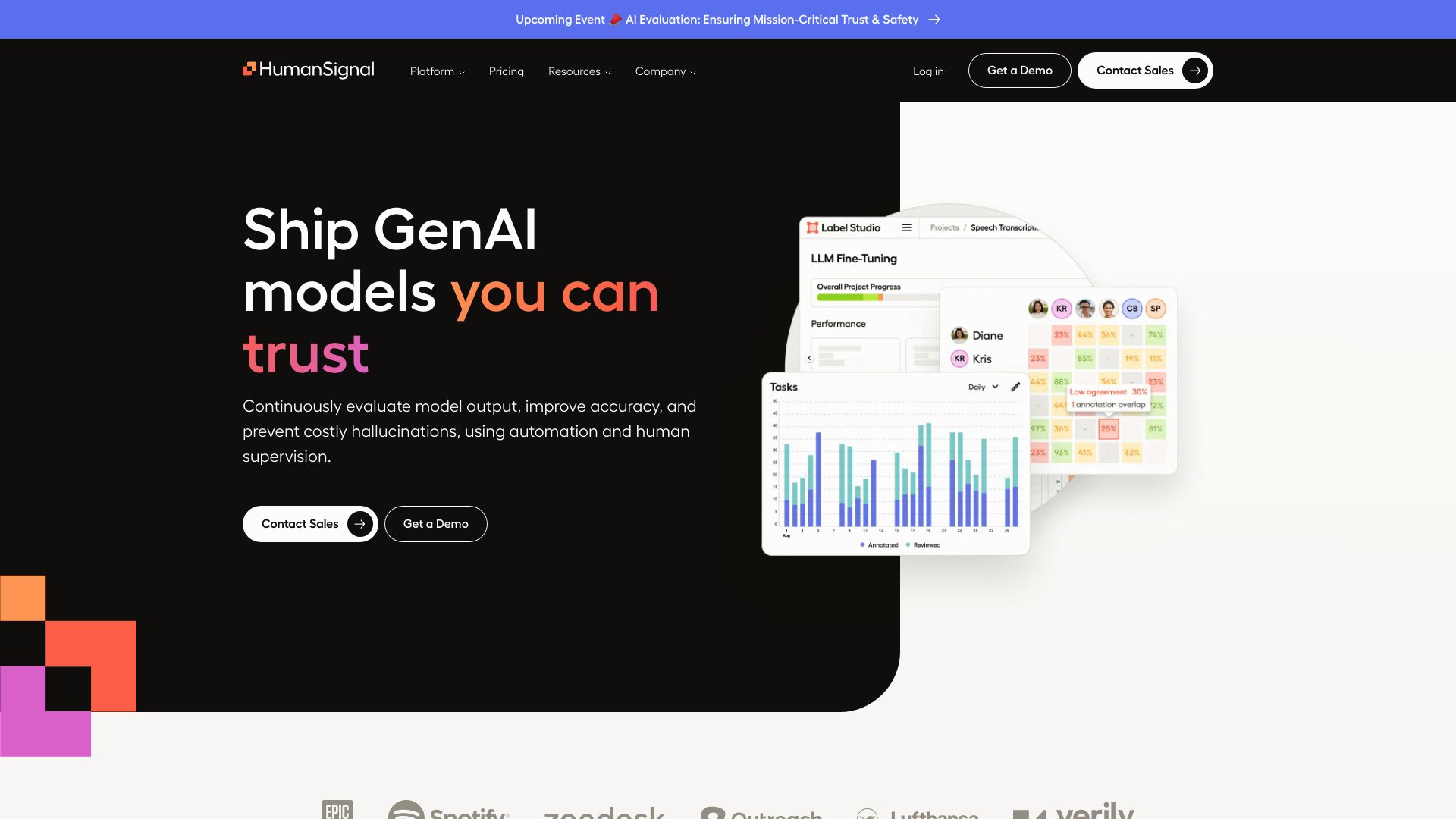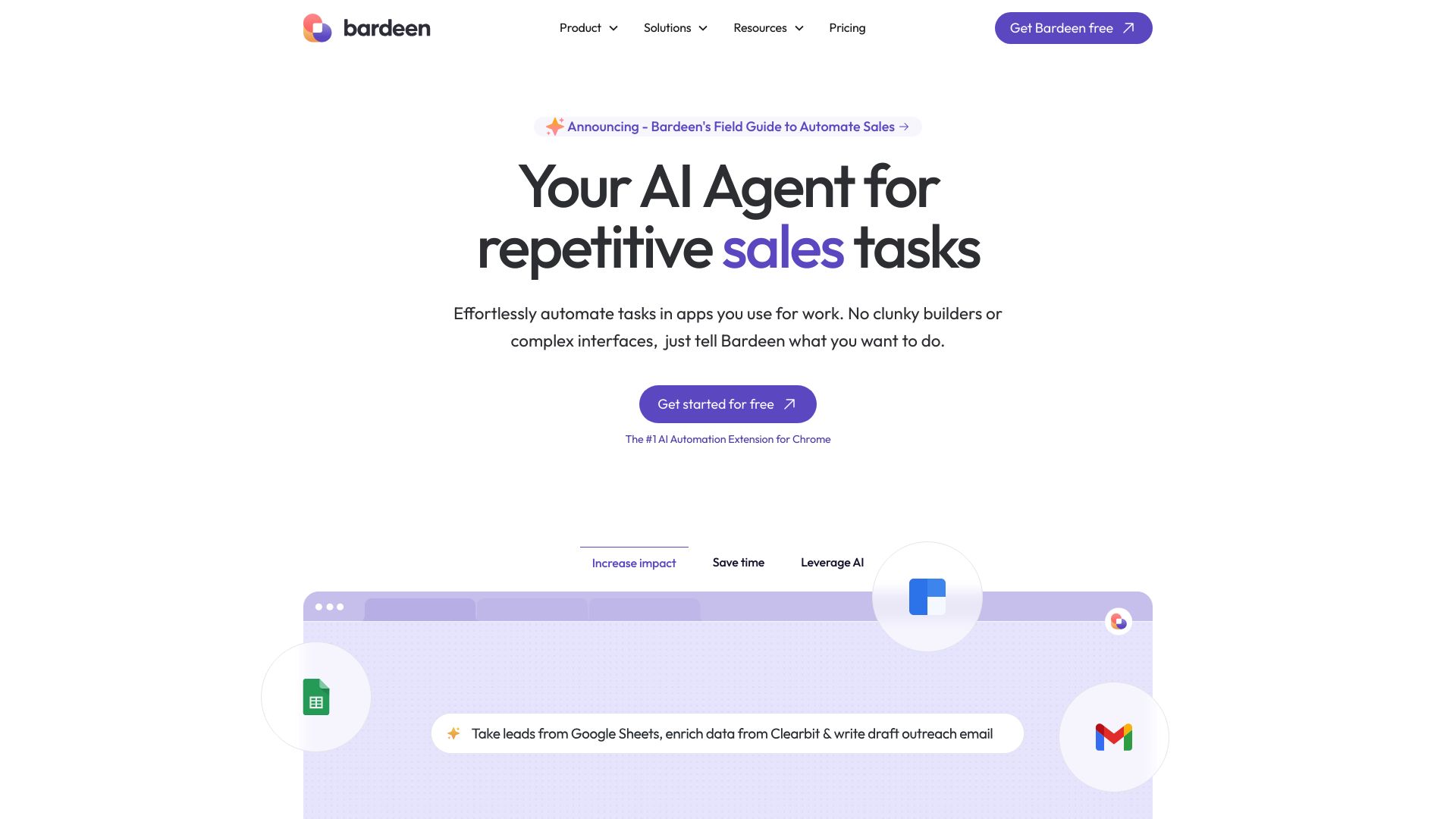Adala vs. Bardeen AI: Comparing Open-Source and No-Code AI Automation
AI technology reshapes industries and redefines possibilities, making the choice of an AI platform crucial for organizations seeking a competitive advantage. This comparison examines Adala vs. Bardeen AI. Adala is an open-source framework for building autonomous data labeling agents, while Bardeen AI, is a no-code web automation platform, alongside SmythOS, a comprehensive AI operating system.
We’ll explore each platform’s core strengths, limitations, and key differentiators to help you make an informed decision about which solution best fits your AI development needs. Whether you’re a developer seeking advanced customization, a business leader focused on scalability, or a non-technical user looking for accessible AI tools, this analysis provides valuable insights into the capabilities and trade-offs of these innovative platforms.
Adala Overview
Adala revolutionizes data labeling with its open-source framework for building autonomous AI agents. These agents acquire and refine labeling skills through iterative learning, transforming how organizations process and categorize vast datasets.


Adala’s core strength lies in its use of large language models as the runtime for AI agents. This foundation enables the creation of specialized skills like text classification, summarization, and question-answering. The platform’s modular architecture encourages extensibility, allowing developers to craft custom skills tailored to specific data labeling needs.
Adala’s core strength lies in its use of large language models as the runtime for AI agents… enabling the creation of specialized skills like text classification, summarization, and question-answering.
A key feature of Adala is its human-in-the-loop approach. Agents learn from labeled ground truth datasets and can request human feedback on their predictions. This tight feedback loop ensures high-quality results while continuously improving agent performance. The framework also supports multiple agents with different skills, enabling complex data tasks through collaboration.
Agents learn from labeled ground truth datasets and can request human feedback on their predictions… ensuring high-quality results while continuously improving agent performance.
While Adala offers powerful capabilities for data labeling, it lacks some features found in more comprehensive AI platforms. There’s no visual builder or no-code editor, which may limit accessibility for non-technical users. Additionally, the framework doesn’t explicitly mention support for multimodal data or integration with specific AI model providers like Hugging Face.
Despite these limitations, Adala’s focus on autonomous, improvable data labeling agents positions it as a valuable tool for organizations dealing with large-scale data processing challenges. Its open-source nature and emphasis on community contributions ensure ongoing evolution and adaptation to emerging data labeling needs.
Bardeen AI Overview
Bardeen AI offers a no-code web automation platform as a Chrome browser extension. Users create automated workflows called Playbooks through a visual drag-and-drop interface, without coding skills. The platform leverages AI to enhance automation capabilities for repetitive web-based tasks.


The platform features a library of pre-built actions and triggers for popular apps like Gmail, Google Sheets, and LinkedIn. Bardeen AI incorporates AI-powered features such as text classification, data extraction, and text generation using models like GPT-3. This combination of no-code accessibility and AI capabilities aims to democratize automation for users across various skill levels.
Bardeen AI incorporates AI-powered features such as text classification, data extraction, and text generation … to democratize automation for users across various skill levels.
Bardeen AI emphasizes human-in-the-loop interaction, allowing users to validate data, guide automations, and provide inputs as needed. This approach enables personalized automation tailored to specific user needs, rather than one-size-fits-all solutions. The platform’s vision centers on evolving automation from pure efficiency to augmenting human capabilities through AI participation.
While Bardeen AI excels in browser-based robotic process automation (RPA) with human oversight, it has limitations. The platform lacks features for independent agents, advanced scalability, and diverse deployment options. It also falls short in areas like programmatic logic, multimodal data handling, and generalized problem-solving beyond pre-defined templates. These constraints may limit its applicability for more complex enterprise-wide automation needs or fully autonomous operations.
Feature Comparison
Adala and Bardeen AI offer distinct approaches to AI-powered automation, with notable differences in their core capabilities and target use cases. Adala provides an open-source framework for building autonomous data labeling agents, leveraging large language models as the runtime for specialized skills. In contrast, Bardeen AI focuses on no-code web automation through a Chrome extension, emphasizing ease of use for browser-based tasks.
A key feature gap exists in the development environments and deployment options. Adala supports hosting agents in both development and production environments, allowing for iterative improvement of data labeling skills. Bardeen AI lacks this flexibility, constraining users to browser-based automation without distinct development stages. Additionally, Adala’s open-source nature enables deeper customization and extension of its framework, while Bardeen AI’s closed ecosystem limits advanced modifications.
In terms of security and core components, Adala falls short compared to Bardeen AI. While Adala emphasizes reliable and trustworthy AI agents, it lacks explicit features for data encryption, OAuth integration, and IP control. Bardeen AI, designed for business users, likely incorporates these security measures to protect sensitive data during web-based automations. However, Adala’s use of foundation AI models and extensible architecture provides a more robust foundation for complex AI tasks beyond Bardeen AI’s browser-centric approach.
| Adala | Bardeen AI | SmythOS | |
|---|---|---|---|
| CORE FEATURES | |||
| Hosted Agents (Dev, Production) | ❌ | ✅ | ✅ |
| Visual Builder | ❌ | ✅ | ✅ |
| No-Code Options | ❌ | ✅ | ✅ |
| Memory & Context | ✅ | ❌ | ✅ |
| Autonomous Agents | ✅ | ❌ | ✅ |
| Debug Tools | ❌ | ❌ | ✅ |
| Multimodal | ❌ | ❌ | ✅ |
| Problem-Solving Capabilities | ✅ | ❌ | ✅ |
| Multi-Agent Collaboration | ❌ | ❌ | ✅ |
| Audit Logs for Analytics | ❌ | ❌ | ✅ |
| SECURITY | |||
| Constrained Alignment | ✅ | ❌ | ✅ |
| Data Encryption | ❌ | ✅ | ✅ |
| OAuth | ❌ | ✅ | ✅ |
| IP Control | ❌ | ❌ | ✅ |
| COMPONENTS | |||
| Foundation AIs | ✅ | ❌ | ✅ |
| Huggingface AIs | ❌ | ❌ | ✅ |
| Zapier APIs | ❌ | ❌ | ✅ |
| All other APIs, RPA | ❌ | ✅ | ✅ |
| Logic | ✅ | ❌ | ✅ |
| Data Lakes | ❌ | ❌ | ✅ |
| DEPLOYMENT OPTIONS (EMBODIMENTS) | |||
| Deploy as API | ✅ | ❌ | ✅ |
| Deploy as Webhook | ❌ | ❌ | ✅ |
| Staging Domains | ❌ | ❌ | ✅ |
| Production Domains | ❌ | ❌ | ✅ |
| API Authentication (OAuth + Key) | ❌ | ❌ | ✅ |
| Deploy as Site Chat | ❌ | ❌ | ✅ |
| Deploy as Scheduled Agent | ❌ | ✅ | ✅ |
| Deploy as GPT | ✅ | ❌ | ✅ |
| DATA LAKE SUPPORT | |||
| Hosted Vector Database | ✅ | ❌ | ✅ |
| Sitemap Crawler | ❌ | ❌ | ✅ |
| YouTube Transcript Crawler | ✅ | ✅ | |
| URL Crawler | ❌ | ❌ | ✅ |
| PDF Support | ❌ | ✅ | ✅ |
| Word File Support | ❌ | ❌ | ✅ |
| TXT File Support | ❌ | ❌ | ✅ |
SmythOS stands out as the premier alternative to Adala and Bardeen AI for AI automation. Our comprehensive platform combines powerful capabilities with exceptional usability, making it the ideal choice for businesses and developers. SmythOS offers hosted agents for both development and production, an intuitive visual builder, and no-code options that democratize AI creation.
We excel in areas where competitors fall short, including autonomous agent capabilities, multi-agent collaboration, and advanced problem-solving. Our platform supports diverse deployment options, from APIs to scheduled tasks, enabling seamless integration into existing workflows. With robust security features, extensive API support, and multimodal processing capabilities, SmythOS delivers a versatile solution for leveraging AI across industries.
SmythOS stands out as the premier alternative to Adala and Bardeen AI for AI automation. Our comprehensive platform combines powerful capabilities with exceptional usability, making it the ideal choice for businesses and developers.
The platform’s enterprise-grade scalability and data lake support further solidify its position as the go-to choice for organizations seeking to maximize the potential of AI automation. By choosing SmythOS, you’re not just selecting a tool; you’re embracing a future-proof solution that adapts to your evolving needs and opens up limitless possibilities for AI-driven innovation.
Conclusion
Adala and Bardeen AI offer unique approaches to AI-powered automation, each with distinct strengths and limitations. Adala’s open-source framework for autonomous data labeling agents provides flexibility and extensibility, ideal for organizations with complex data processing needs. Bardeen AI’s no-code web automation platform excels in simplifying browser-based tasks for non-technical users.
SmythOS, however, emerges as the superior choice, combining the strengths of both platforms while addressing their limitations. Our comprehensive AI operating system offers unparalleled versatility, from visual building tools to advanced deployment options. SmythOS empowers users to create sophisticated AI agents without coding expertise, while providing the scalability and security features necessary for enterprise-level implementations.
We invite you to experience the power of SmythOS firsthand. Create a free account today and discover how our platform can revolutionize your AI development process. With SmythOS, you’ll have access to 300,000+ integrations, flexible deployment options, and a robust ecosystem of tools to bring your AI visions to life. Don’t just automate – innovate with SmythOS.
Last updated:
Disclaimer: The information presented in this article is for general informational purposes only and is provided as is. While we strive to keep the content up-to-date and accurate, we make no representations or warranties of any kind, express or implied, about the completeness, accuracy, reliability, suitability, or availability of the information contained in this article.
Any reliance you place on such information is strictly at your own risk. We reserve the right to make additions, deletions, or modifications to the contents of this article at any time without prior notice.
In no event will we be liable for any loss or damage including without limitation, indirect or consequential loss or damage, or any loss or damage whatsoever arising from loss of data, profits, or any other loss not specified herein arising out of, or in connection with, the use of this article.
Despite our best efforts, this article may contain oversights, errors, or omissions. If you notice any inaccuracies or have concerns about the content, please report them through our content feedback form. Your input helps us maintain the quality and reliability of our information.
